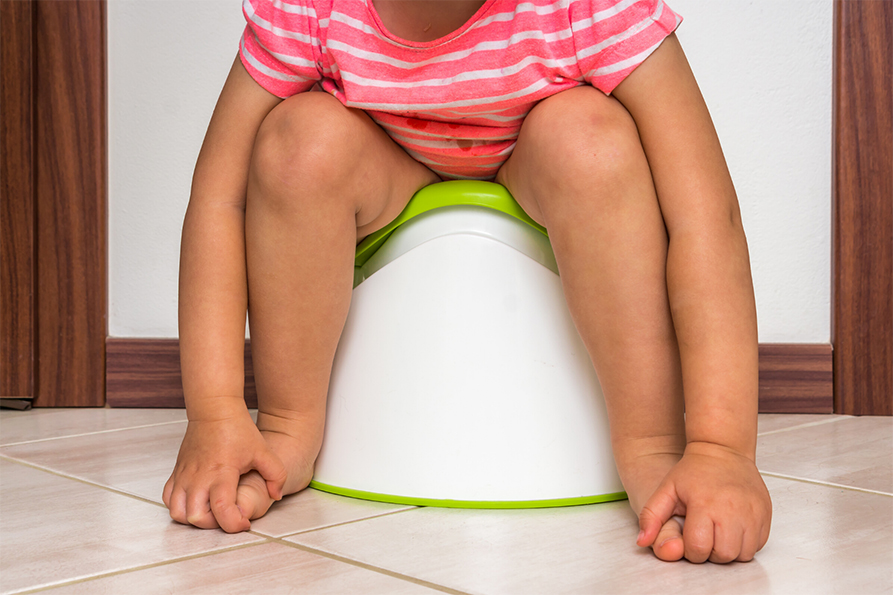Toileting Tips

Is your child ready to start toilet-training? Are you feeling stressed about starting? Toilet-training can seem like an overwhelming skill to tackle! Once your child starts indicating the signs that they are ready, use the strategies below to help make the transition easier.
Your Child May Be Ready if:
- She is showing interest in the bathroom. Your child may start exploring the bathroom, touching toilet paper, or wanting to flush the toilet
- Indicating their diaper is wet
- He is wanting to observe or watch people use the bathroom
- Stays dry for 2 hours at a time or during nap
- Starting to develop dressing skills including pulling pants up/down
- Children typically begin toilet-training between 18 months – 3 years
Helpful Strategies
1. Set the environment up for success
- Plan ahead! Toilet-training should be a positive experience so make sure both your child and you are ready. Decide on a start date and ensure you have all of the materials ready, including a potty chair and training pants.
- Decide how you plan to handle any challenges or resistance. Consider what toilet-training will look like out in the community or when you’re traveling.
- Create a positive bathroom environment. Make sure all necessary items, including toilet paper and the potty-chair, are within reach. Try adding fun-smelling soaps or towels of their favorite character to the bathroom to make handwashing exciting.
2. Identify your child’s toileting routine
- What times of day can your child consistently practice using the bathroom? Try going during routine moments, including after they wake up, before and after naptime, before leaving the house, before bedtime, or before a meal.
- Learn to recognize the signs of when your child needs to go to the bathroom. Start asking your child if they need to go and bring awareness to their body’s cues.
3. Practice toileting-skills
- Set your child up for success by letting them wear clothes that can be easily removed. Pants with elastic waistbands are great for toilet training.
- Incorporate books or dolls that discuss toilet-training steps to help your child learn and practice.
4. Offer helpful strategies in the moment
- Your child may need more time to sit on the toilet. Try running the sink water or allow them to look at a book to help the process. They can also sing a song to help relax and create a routine.
- If your child has trouble remembering the steps, consider creating a visual with each step.
5. Praise, Praise, Praise!
- Children need lots of practice and may still have accidents in the process. Be mindful of shaming or using negative language if they have an accident and try to stay calm. Provide your child with a lot of praise when they use the toilet successfully. Toileting is a big achievement so continue to praise and encourage your child throughout the process!

Eyas Landing is a therapy clinic with a mission to provide evidence-based and family-centered therapy services for children, adolescents, and their families. The primary goal is to deliver relationship-based interventions within the most natural environments and to empower families to reach their full potential. To achieve this goal, our highly educated, compassionate staff dedicates time and expertise to create experiences that maximize therapeutic outcomes. The strength, determination, and perseverance of our clients are evident as they succeed in therapy, and ultimately in their daily lives.
Eyas Landing offers a wide range of comprehensive services including Speech Therapy, Occupational Therapy, Physical Therapy, ABA Therapy, Social Work, Family Therapy, and Neuropsych testing. Services are provided throughout the Chicagoland area via Telehealth, In-Home, and in our state of the art clinic.
Want to learn more or you have a specific question? Feel free to connect with us here!


